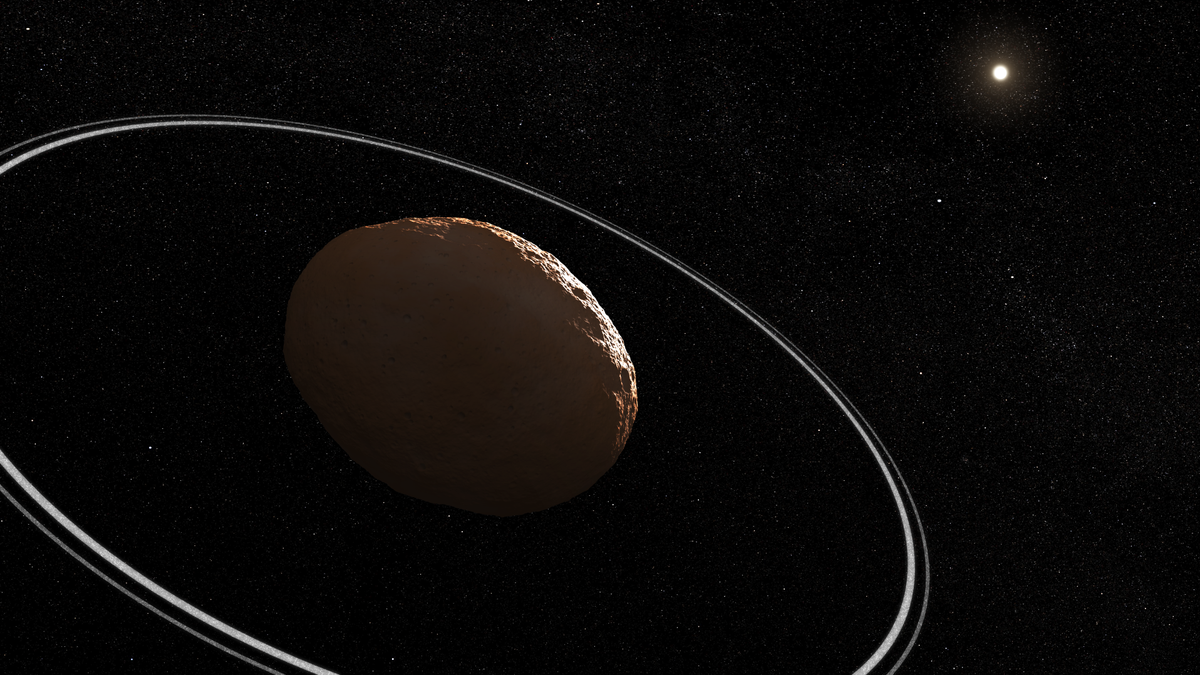Chariklo is about 160 miles (257.5 kilometers) across and is one of the Centaurs, a group of icy bodies between Jupiter and the ice giants Uranus and Neptune. Chariklo is the largest of these small bodies, making it similar to a large boulder the size of a small boulder as far as superlatives go. Chariklo also boasts two rings, discovered in 2013 and recently observed by the Webb Space Telescope.
Now, research published in The Planetary Science Journal suggests that a satellite may be confining Chariklo’s skimpy rings. “Planetary rings will naturally spread or disperse over time,” said Amanda Sickafoose, an astronomer at the Planetary Science Institute and the study’s lead author, in an institute release.
“Chariklo exhibits two thin rings, a few kilometers in width,” Sickafoose added. “In order for the rings to stay this thin, there needs to be a mechanism to confine the material and prevent it from dispersing.”


This is the best summary I could come up with:
Chariklo is about 160 miles (257.5 kilometers) across and is one of the Centaurs, a group of icy bodies between Jupiter and the ice giants Uranus and Neptune.
Chariklo also boasts two rings, discovered in 2013 and recently observed by the Webb Space Telescope.
Now, research published in The Planetary Science Journal suggests that a satellite may be confining Chariklo’s skimpy rings.
“In order for the rings to stay this thin, there needs to be a mechanism to confine the material and prevent it from dispersing.”
To model how a satellite could maintain Chariklo’s rings, the team conducted N-body simulations.
More observations could reveal whether a satellite is indeed orbiting Chariklo, though no direct imagers in operation are capable of spotting it.
The original article contains 414 words, the summary contains 122 words. Saved 71%. I’m a bot and I’m open source!